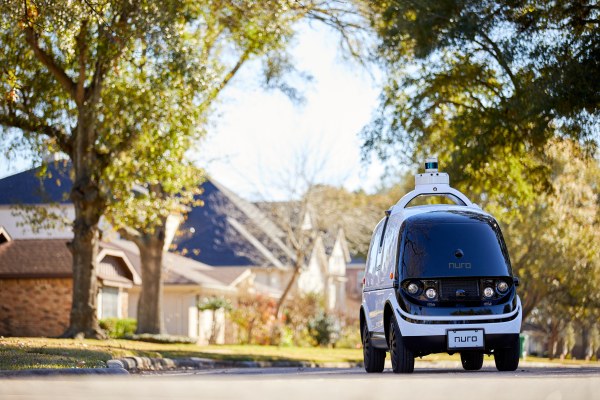We kicked off this year’s TC Sessions: Mobility with a talk featuring three leading players in the field of autonomous delivery. Gatik co-founder and chief engineer Apeksha Kumavat, Nuro head of operations Amy Jones Satrom, and Starship Technologies co-founder and CTO Ahti Heinla joined us to discuss their companies’ unique approaches to the category.
The trio discussed government regulation on autonomous driving, partnerships with big corporations like Walmart and Domino’s, and the ongoing impact the pandemic has had on interest in the space.
The pandemic effect
Delivery is one of the countless categories that have been profoundly impacted by COVID-19. Interest in autonomous delivery has compounded, but will this be a permanent sea change? Or will things regress some when life returns to normal?
Kumavat: Even before the pandemic hit, this whole e-commerce trend was already on the rise. No one wants their deliveries to be done after a week or two weeks. Everyone is expecting them to be done on the same day, as well as curbside pickup options. There was already a rise in the expectations of e-commerce and on-demand deliveries even before the pandemic hit. Post-March 2020, what we have seen is a huge increase in that trajectory. (Timestamp: 1:55)
Jones Satrom: When you think about the number of trips the consumer used to take just for shopping, that’s roughly 40% of the trips they would take. They now have habits around that kind of stuff. It’s a timesaver for the consumer. We do see those trends continuing and we do see folks sustaining the online ordering piece and wanting to be able to get things when they want them. (Timestamp: 8:39)
Heinla: At Startship, a big part of our business is serving college campuses. And obviously college campuses, with COVID, went to distance learning, so there was less business there. We also have a lot of people in operations that take care of our robots. So we made some changes back then, but right now our business is booming. The universities are back and we have more accounts than we did a year ago. (Timestamp: 21:56)
- How COVID-19 accelerated DoorDash’s business
- Quarantine drives interest in autonomous delivery, but it’s still miles from mainstream
- Gatik adds autonomous box trucks to its ‘middle mile’ game plan
On corporate partnerships
A partnership with a company like Walmart or Domino’s can make a startup. But scaling to meet those demands can be immensely difficult for an early-stage company. Is it possible to embrace these deals as they come without putting all of your eggs in a single basket?
Kumavat: I think from understanding the logistics behind their businesses and how we reach their end customers, hugely important from that perspective. I also think that they’re interested in retaining their customers as we go through this e-commerce, last-mile evolution, and the evolution toward more on-demand deliveries. So from that perspective, I think working together with them to understand how do we actually service that demand is going to continue to be incredibly important both for them to retain the demand, but also for us to be able to service the customer in a way that we’re meeting them where their needs aren’t where they want to be met. (Timestamp: 10:42)
Jones Satrom: So the market itself has the need. The customers have a real need for this and this work is actually accelerating the growth. We have seen our customers going to signing contracts and being deployed for multiyear contracts in … unprecedented timelines. So this is something that is not a bet or it’s not a guess that has been made. It’s a very tactical measure that has been taken in response that we have seen. (Timestamp: 19:26)
- Gatik’s self-driving vans have started shuttling groceries for Walmart
- Walmart partners with self-driving startup Nuro to test autonomous grocery delivery in Houston
Regulatory hurdles
Regulation is, understandably, a huge hot-button topic among autonomous delivery companies. Are regulators doing enough to weigh safety concerns of testing AVs on streets and sidewalks without altogether hampering innovation?
Heinla: Regulators are definitely interested in the space, and the main question they have is safety. The autonomous technology is great, but it has to be safe. Starship robots are sidewalk robots, so it’s much safer in the end than on the road. But it’s still a challenge. We still need to prove that our robots are safe. When we started talking to regulators, about four of five years ago, there were a lot of questions and concerns. We were fairly early stage, so it was hard to prove that we were safe. We have now done 1.5 million deliveries. (Timestamp: 25:03)
- Waymo is dropping the term ‘self-driving,’ but not everyone in the industry is on board
- Former head of Alphabet’s Loon joins Starship Technologies as new CEO
